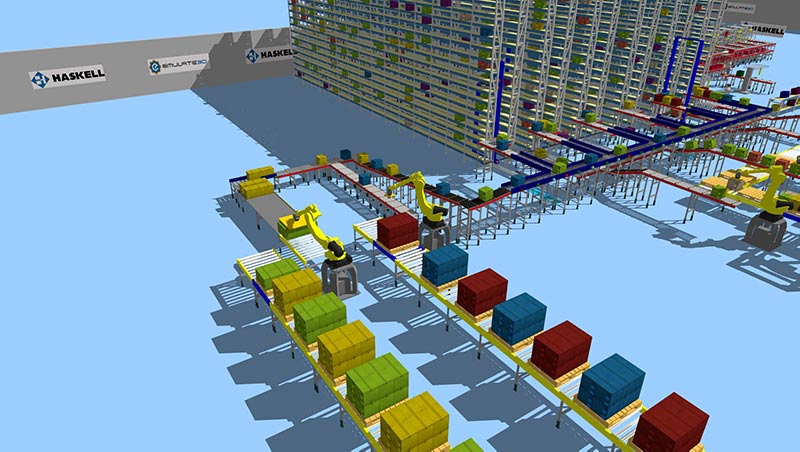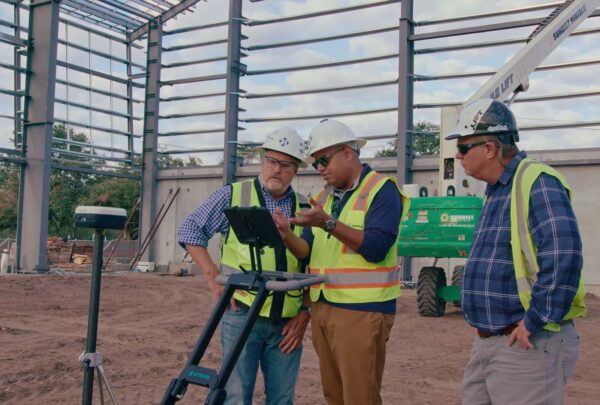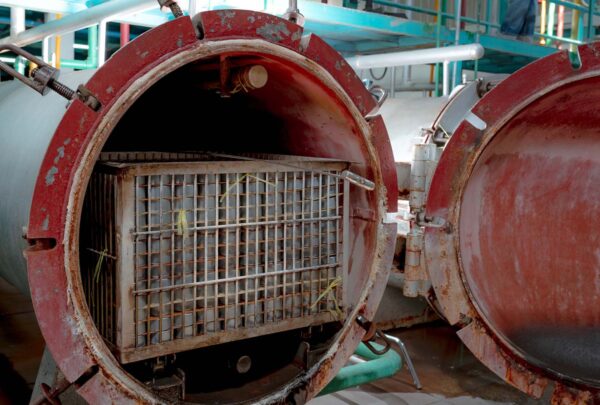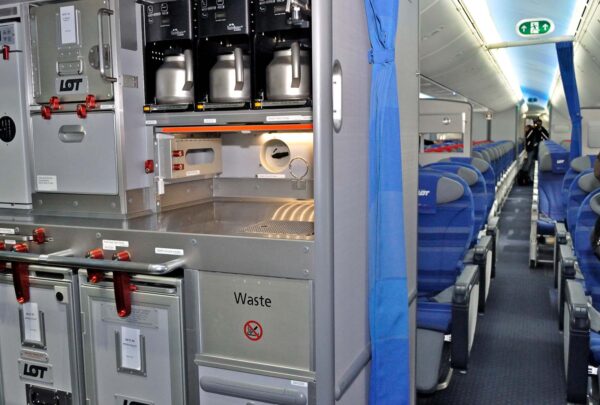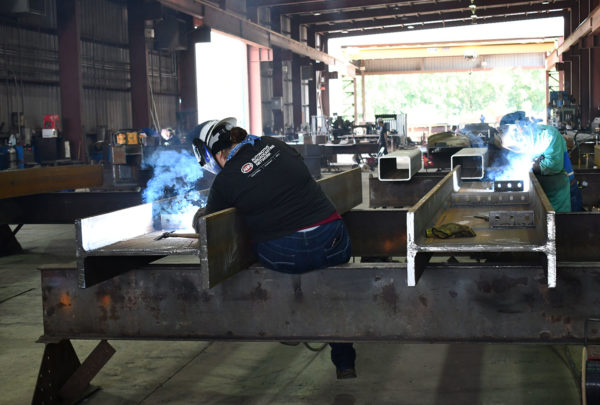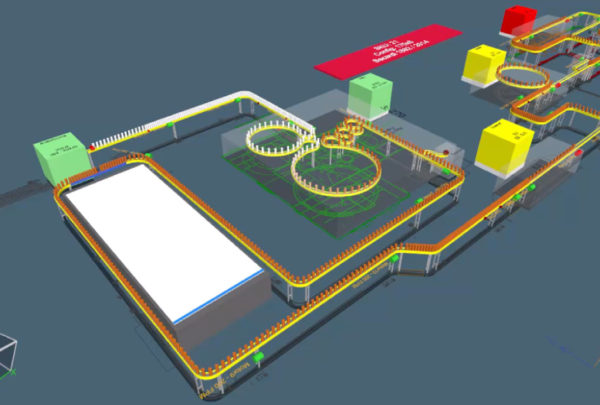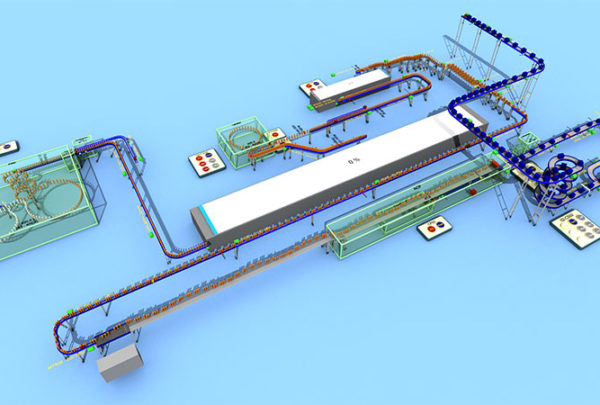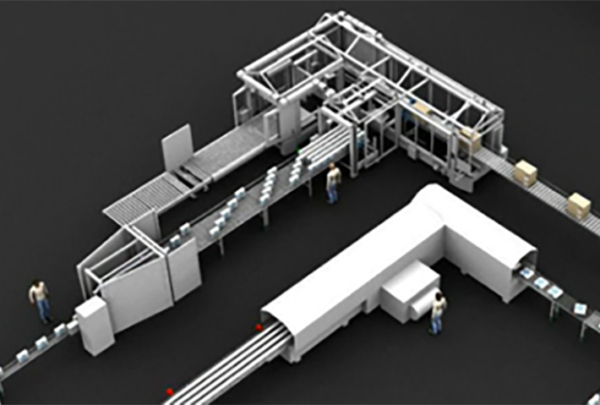Intelligent growth is a delicate balance between adopting the latest manufacturing advancements to improve overall equipment effectiveness (OEE) and minimizing downtime that could lead supply issues for current products. And even when a schedule permits downtime for line upgrades, a company must decide how to make a significant investment in an unproven solution.
Haskell’s System Analytics & Modeling team provides the crystal ball clients need to see into the future, preempting problems and targeting improvements with the highest ROI.
“Data is the foundation of systems analytics and modeling,” said Donald Montgomery, project engineer with Haskell. “The data allows us to maintain an objective approach to finding solutions for customers, regardless of whether the project calls for consulting, simulation, modeling, or other tools.”
Haskell’s System Analytics team is cutting-edge in its field in building 3D simulation models of a production process. These models provide proof of concept before making potentially more expensive and time-consuming decisions. The process allows designers and clients to discover system defects, consider alternatives, and implement solutions before installation, reducing costs and delays.
“Our ability to implement the latest technology keeps clients ahead of the problems of the future,” Montgomery said. “We are able to provide effective, evidence-based solutions for any challenges a client may be facing.”
Modeling new systems is an integral part of workforce training as well. It enables quick and easy understanding of production systems by all team members and can help new hires get up to speed quickly. By storing information about production processes, clients can reuse parts of existing information and knowledge in new projects, which again saves time and money. In short, a model is a living tool that can be updated as systems change and remains useful throughout the lifecycle of a line.
With experience in a wide array of industries, including Food & Beverage, Consumer Products and Beer, Wine & Spirits, Haskell’s System Analytics team focuses on providing expedient solutions and accurate representations of current and future production. The team uses three main tools to help make data-driven decisions:
Capacity Optimization Models consider how day-to-day operational decisions affect the ability to satisfy orders. When a spirits manufacturer decided to consolidate two facilities into one site, it faced the challenge of accommodating 16 existing lines that produced 60 million cases per year. To complicate things further, these two facilities housed more than 600 SKUs and more than 20 unique bottle features. Haskell’s capacity optimization model targeted volume re-alignment and machine upgrades that reduced 16 lines to nine lines, saving the manufacturer more than $8.1 million in relocation and future operational costs.
Haskell’s capacity optimization model also guided a dairy company in its decision to build a new process and packaging center. The model identified the number of lines and the specification for each line at minimal cost, which enabled the company to produce more than 110 million gallons per year and save more than $3.7 million in unnecessary equipment costs.
Total Cost of Ownership (TCO) analysis considers how ongoing operational costs such as labor, maintenance, and energy usage affect the profitability of capital investments.
For example, a manufacturer had been minimizing maintenance costs in the short-term by not repairing floating buckets that were damaged. However, with fewer buckets in the system, pick-and-place robots lacked materials, resulting in the need for off-line manual packing, more direct labor, and a higher cost per unit. Haskell’s System Analytics team developed a simulation model that showed the need for several modifications to the system control logic to optimize bucket flow through the system. Once the manufacturer implemented bucket maintenance, throughput increased by 500 cases per eight-hour shift, approximately 500,000 more sellable cases per year.
Production Forecast Models allow clients to forecast when to trigger new capital improvements to avoid spending money before it’s needed. When a client was considering making a $400 million capital investment for a new plant, Haskell’s team was able to help it avoid a net $6 million in capital expenditures by demonstrating that the cost of new technology would not pay back without further research and development. In addition, Haskell recommended eliminating proposed additional equipment due to low return on investment and instead recommended increasing space to optimize system OEE.
“We examine the needs of end-to-end product movement, from receiving raw materials to the moment the final product leaves the facility,” Montgomery said. “We’re able to leverage the latest technology in unique ways to create data-driven solutions that save money, minimize risk and provide certainty for our clients – and we do it all without disturbing current production.”
